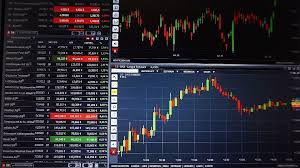
Forex trading is not a 24-hour continuous market; it is segmented into different trading sessions based on the major financial centers around the world. Understanding these Forex trading sessions is crucial for traders looking to optimize their strategies. The market is influenced by different trading sessions, and this influence varies during the day. Working with forex trading sessions Trading Broker AR can help you make informed trading decisions based on these sessions.
What Are Forex Trading Sessions?
The Forex market operates 24 hours a day, five days a week, but it is divided into specific trading sessions that correspond to the major financial hubs of the world. The three primary Forex trading sessions are:
- Asian Session
- European Session
- North American Session
Each session has distinct characteristics that can affect market liquidity and volatility, making it essential to understand how they function.
1. The Asian Trading Session
Starting at 00:00 GMT and ending at 09:00 GMT, the Asian session is primarily dominated by the Tokyo financial market. Although it is the least volatile of the three sessions, it provides significant trading opportunities, particularly for currency pairs involving the Japanese yen (JPY), Australian dollar (AUD), and New Zealand dollar (NZD).
Key Characteristics
- Lower trading volume compared to other sessions
- Increased activity in pairs influenced by Asian economies
- Less significant economic news and events

Trading Strategies
During the Asian session, traders often utilize range trading strategies or focus on major economic announcements from Japan or China that could impact currency pairs associated with these countries.
2. The European Trading Session
The European trading session is among the most active and fluid sessions, taking place from 08:00 GMT to 17:00 GMT. Starting with the markets in London, this session witnesses high trading volumes and increased volatility, especially for pairs like EUR/USD, GBP/USD, and others.
Key Characteristics
- High trading volume and liquidity
- Major economic reports and indicators are released during this time
- Triggers significant market moves due to interbank trading
Trading Strategies
Traders often capitalize on breakout strategies and trend following during this session due to the high volatility and market participation.
3. The North American Trading Session

Following the European session, the North American trading session begins at 13:00 GMT and runs until 22:00 GMT. It overlaps with the latter part of the European session and is characterized by high trading volumes, particularly in pairs involving the US dollar (USD).
Key Characteristics
- High volatility and trading opportunities
- Influence of economic data releases from the US and Canada
- Market sentiment often driven by news and data releases
Trading Strategies
Traders focusing on the North American session often look for news trading strategies, capitalizing on economic indicators such as Non-Farm Payrolls (NFP), GDP growth rates, and Federal Reserve interest rate decisions.
Trading Session Overlap
One of the most crucial aspects of Forex trading sessions is the overlap between the European and North American sessions, which occurs from 13:00 GMT to 17:00 GMT. This overlap is when traders see the highest liquidity and volatility, providing numerous trading opportunities.
Strategies for Overlap Trading
Traders can use breakout trading strategies or look for trend continuation patterns. The heightened volume and volatility during this time can lead to significant price movements, allowing for substantial profit potential.
Conclusion
Understanding the different Forex trading sessions can be instrumental in developing an effective trading strategy. By recognizing when to trade based on session activity, traders can enhance their chances of success. Each session has its distinct characteristics and offers unique trading opportunities. By leveraging the information provided about each session, traders can maximize their engagement in the Forex market, making informed decisions to benefit their trading portfolios.
Recent Comments